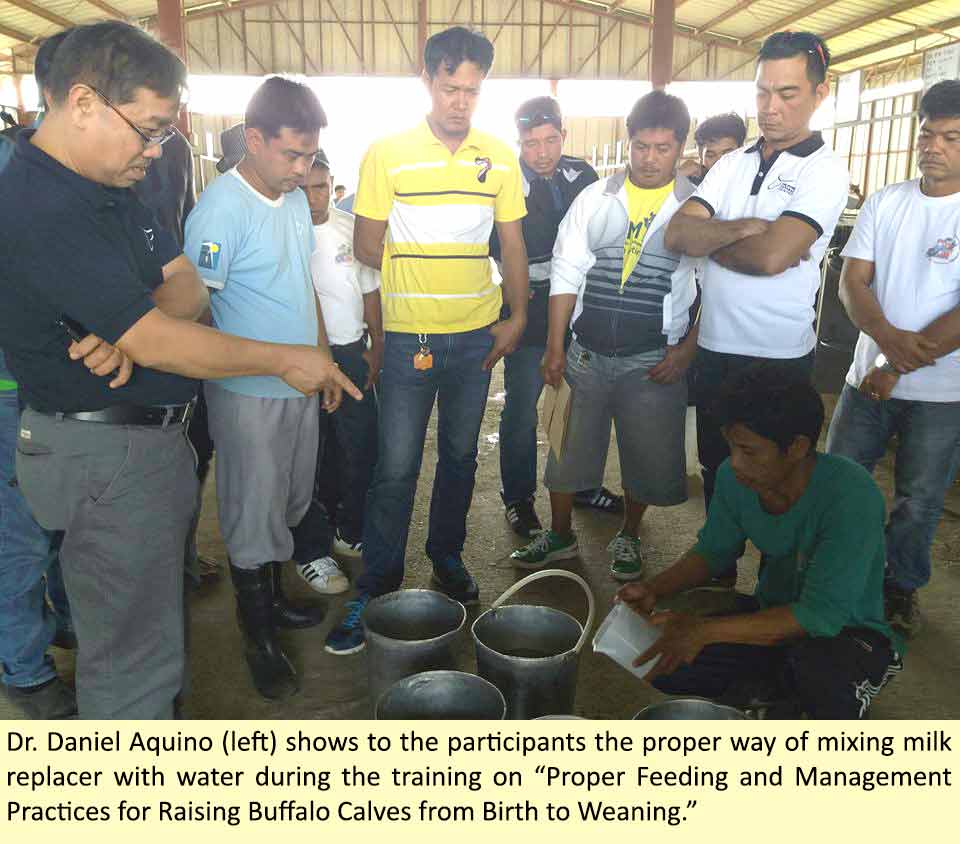Fourteen dairy farmers gained better understanding of the common issues on animal health and nutrition including the economic benefits of using alternative milk supplements thru a farmers’ training on “Proper Feeding and Management Practices for Raising Buffalo Calves from Birth to Weaning” last March 7 at the PCC national headquarters, Science City of Muñoz in Nueva Ecija.
The said training is in line with the project 1 component of the Philippine Council for Agriculture, Aquatic and Natural Resources Research and Development (PCAARRD)-funded research titled, “Development of Feeding Protocols and Practices to Support the Nutritional Requirements of Dairy Buffaloes”.
“Having a successful calf raising operation is not only important financially, but also important for the future of the herd. This training will help them plan and manage their calves properly and economically thru the use of milk substitute,” Dr. Daniel Aquino, project leader and center director of PCC at CLSU, said.
According to him, the use of alternative source of milk for calf like milk replacer is one of the strategies in increasing the income of dairy buffalo farmers because of the potential savings that it offers.
“Dairy farmers can sell all their harvested milk because calves are fed with milk replacer instead of giving them two liters of the dam’s milk. This means additional income for the farmers,” he added.
Based on the publication of Bovine Alliance on Management and Nutrition, high quality calf milk replacers, when correctly matched to the specific calf rearing systems and properly fed to calves, provide several benefits to the dairy producer and calf raiser. These benefits include improved biosecurity, calf performance, and economics.
PCC executive director Dr. Arnel Del Barrio, on the other hand, said that practicing proper feeding management can reduce high mortality rate among dairy calves.
The training comprised of lectures, workshops, and actual demonstration on how to mix milk replacer with water and the proper way of feeding this to calves.
“This one-day training only serves as an orientation for the participants. The project team will conduct an actual visit to their farms to thoroughly teach them and monitor their feeding systems since mixing the milk replacer is a crucial step,” Christian Lacanilao, PCC science research assistant.
The training was attended by farmers from the different cities and municipalities in Nueva Ecija. The selection of the participants was based on their current number of calf in the herd, interest and commitment to participate, and their willingness to learn new things about calf rearing.
After the training, the participants were also given bags of milk replacers as an alternative source of milk for their calves for three months before weaning.

